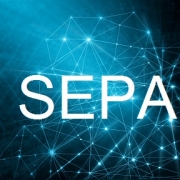Introduction to Digital Payments
The banking world had been changing rapidly over the first 20 years of this century. Activity shifted increasingly from traditional commercial banks built on conventional street-level face-to-face interactions with customers, to digital financial service providers operating through internet access. What really came as a shock was the tremendous boost that the coronavirus pandemic gave to the transition rate and the pressure that put on the whole industry to meet new demands for payment services with innovative and efficient products.
The foundation of the whole new digital bank-to-bank (B2B) transaction infrastructure rests on a small group of payment settlement platforms – principally SWIFT for most Western economies, along with a few politically-driven breakaways like CIPS in China and SPFS in Russia. In the rest of this article, we will be talking about how banks using the SWIFT network have responded to the demand for services coming due to the pandemic. Especially in Europe, where there is now the Single Euro Payments Area (SEPA) for payments sent in euros, transfers are processed by SWIFT within minutes.
Digital business payment is now king
During the pandemic, physical contact became unusual or even impossible, and digital interaction became the norm. The need was to create and track B2B payments in the same manner as digital peer-to-peer consumer payments, with added security and tracking information. Banks needed to give their corporate clients more granular detail of their payments on the SWIFT international payments network. SWIFT also sped up its processing times, introducing a tool called Swift gpi, which allows transactions to be settled within a day or even within minutes, with added tracking information. Payment systems integrated with Swift gpi could ensure frictionless, secure and instant account-to-account transfers. When any error holds up a payment, gpi enables financial institutions to investigate the issue, fix it quickly, reduce payment processing times, improve customer experience, and eliminate costly manual interventions.
Digital identity security
Digital identity security is a core feature of the new technology. Every transaction gets validated by a comprehensive identity service that carries out real-time identity validation before a payment transaction is authorized.
Billions of consumers worldwide are relying on digital payment systems to manage their cash and spending securely online. Businesses need to keep in step with this and shift their financial transactions to banks that give them the best digital payments support.
Penetration and diversity
In earlier years, the new payment methods space, with debit cards, e-money and e-wallets or prepaid payment cards, was already the fastest-growing section of the financial industry, with estimates of $3 trillion in annual volume and snowballing. This shift initially had been driven by mobile device penetration and the rise of e-wallets and other alternative payment methods. Now, it’s all turbo-charged by the pandemic and demand for digital B2B transactions.
The pandemic had a massive effect on many aspects of banking, especially emphasizing the urgent need for payment system modernization. The contributing factors have been a surge in the volume of digital transactions and the change in the type of payments, primarily on the retail side. It has led to a dramatic reduction in real cash movement. Banks literally don’t get to touch much cash anymore.
Banks now have to offer their business customers up-to-date digital payment options, replacing the legacy check processing and teller services. And they can’t just paper over the cracks in their old systems waiting for things to return to normal – business isn’t going back to the old ways. To keep ahead of the dynamic shifts, financial institutions need to be offering their business customers products specifically tailored for digital payments. If your bank needs to up its game in this area, talk to our expert team who specialize in this field.




Leave a Reply
Want to join the discussion?Feel free to contribute!